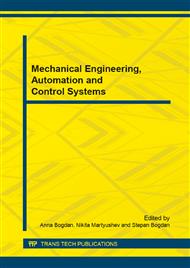p.659
p.667
p.673
p.678
p.683
p.689
p.695
p.704
p.709
Adaptive Neuro-Fuzzy Recognition Technology Intersecting Objects
Abstract:
The study discusses adaptive neuro-fuzzy methods of recognition of the multidimensional overlapping objects on the basis of the introduced concepts, generalized and modified operations of fuzzy set theory and neural networks. To improve recognition accuracy, proposed a combined approach including neural network analysis of generalized images based on Kohonen maps, and building systems fuzzy inference based on the identification of allocated clusters integral characteristics of the images. Using the derived system of diagnostic decision rules "If ... then" the comprehensive forecast map of oil South of Cheremshan field was built.
Info:
Periodical:
Pages:
683-688
Citation:
Online since:
April 2015
Authors:
Price:
Сopyright:
© 2015 Trans Tech Publications Ltd. All Rights Reserved
Share:
Citation:


